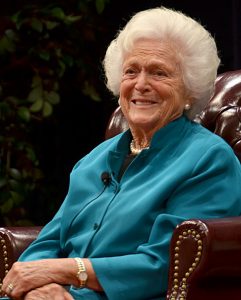
Death may be the price we pay for life. But many physicians still regard death as a kind of failure. For families and patients, decisions about the management of serious illness and death can seem forbidding and difficult.
Even so, timely discussion of options such as palliative care and hospice care can offer deeply meaningful choices to people navigating life-threatening and terminal illnesses, according to experts on “The Increasing Demand for Palliative Care,” panel last week during Health Journalism 2018 in Phoenix.
“The model I am trying to promote … is earlier conversation,” said Robert Shannon, M.D., assistant professor of family medicine and palliative medicine at the Mayo Clinic College of Medicine in Jacksonville, Fla.
Palliative care, with its focus on sustaining the quality of life and relief of distressing symptoms, can help patients cope with advanced and chronic disease.
The Friday panel discussion became especially timely after the family of former First Lady Barbara Bush, who died Tuesday, announced over the weekend that the ailing 92-year-old had discontinued curative treatment for congestive heart failure and chronic obstructive pulmonary disease in favor of “comfort care” practices used in palliative and hospice care, according to these stories from Today, Kaiser Health News and NBCNews.com.
“Palliative care…regards dying as a normal process. It neither hastens nor postpones death,” Shannon said during the conference panel, moderated by Liz Seegert, AHCJ’s core topic leader on aging. Hospice care offers support to people in the final phase of terminal illness.
“All hospice patients are palliative, but not all palliative patients are hospice,” Shannon observed.
Too often, however, patients obtain these services far too late in the trajectory of illness because of a lack of understanding of what they offer, plus also a reluctance to face their mortality, said panelist Scott Harbertson, R.N., director of clinical services at the not-for-profit Hospice of the Valley in Phoenix.
“Over 100 billion people have died on this planet,” he noted. “It makes me wonder why death is an event for which we remain unprepared.”
Harbertson told stories from his work: the pain of one family shattered by a mother’s death; the journey of another which marked a cancer diagnosis with a meaningful trip.
“Hospice doesn’t have to be about dying. It can be about living,” he said. “It is our privilege to help write that final chapter.”
Another panelist, photographer and filmmaker Carolyn Jones, acknowledged that she was uncertain about how to talk about death before embarking on her latest project “Defining Hope,” a documentary now airing on PBS stations that aims to help educate people about making better end-of-life decisions.
“It’s a daunting topic,” Jones said, relating how she worked with nurses to meet patients and families facing serious illness and death. It was the nurses who knew the subject most intimately. “The nurses guided me.”
Through following the patients’ stories, Jones said she discovered a new appreciation for her own life.
Much work remains to raise awareness about the opportunities offered by palliative care and hospice care. Journalists can play an important role in educating their audiences, the panelists said.
“It’s a wonderful opportunity,” Jones said. “with more stories to be told.”
To see what conference attendees tweeted about the session, search #AHCJpalliative on Twitter.







